April 30, 2024
Preview: Inside Austin Gardens Tour
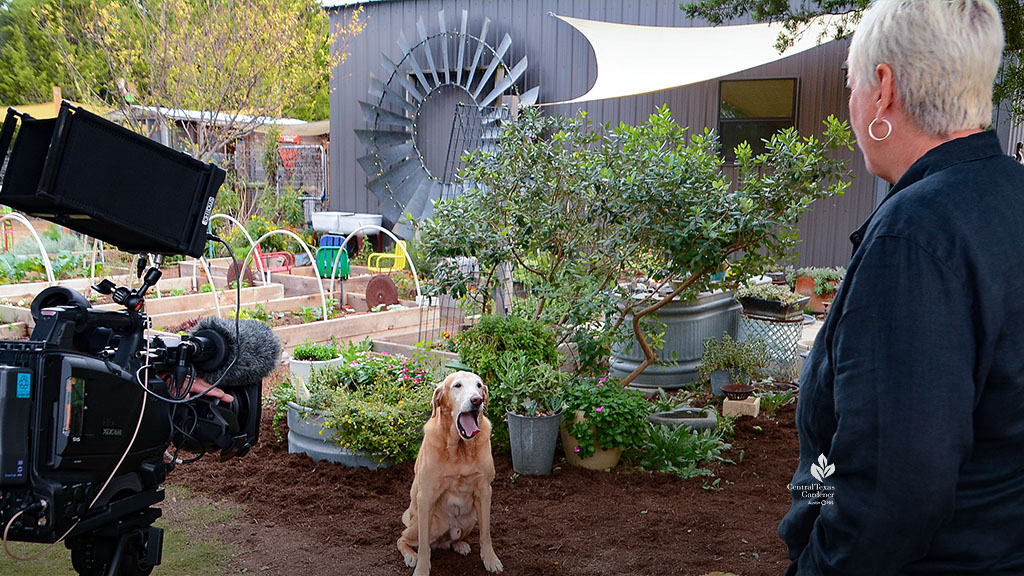
Get set for a fun day of design inspiration, problem-solving intel, and clever ideas on the Inside Austin Gardens Tour on May 11, a tour for gardeners by gardeners. A project of the Travis County Master Gardeners, they’ll be on hand with the homeowners to answer your questions from plants to patio design and maintenance.

This week, Master Gardener JoAnna Benko joins John Hart to talk details. This year, tour four gardens on May 11 from 9 a.m. – 3 p.m. No cash: online payment only. $20 by Sunday May 5; $25 day of. Get your tickets here.
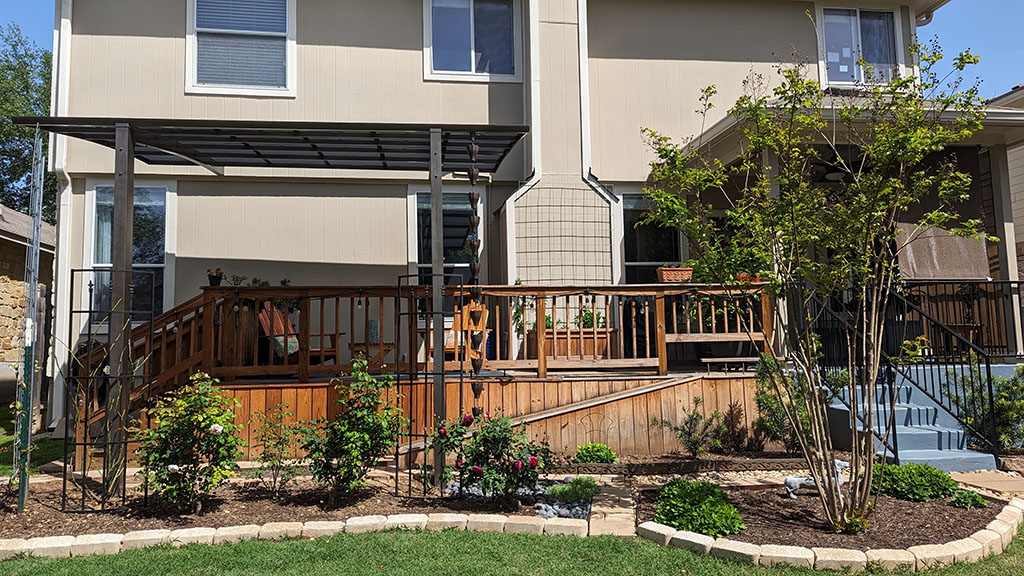
Let’s start off with Daphne Richards’ own garden, “The Work-in-Progress.”
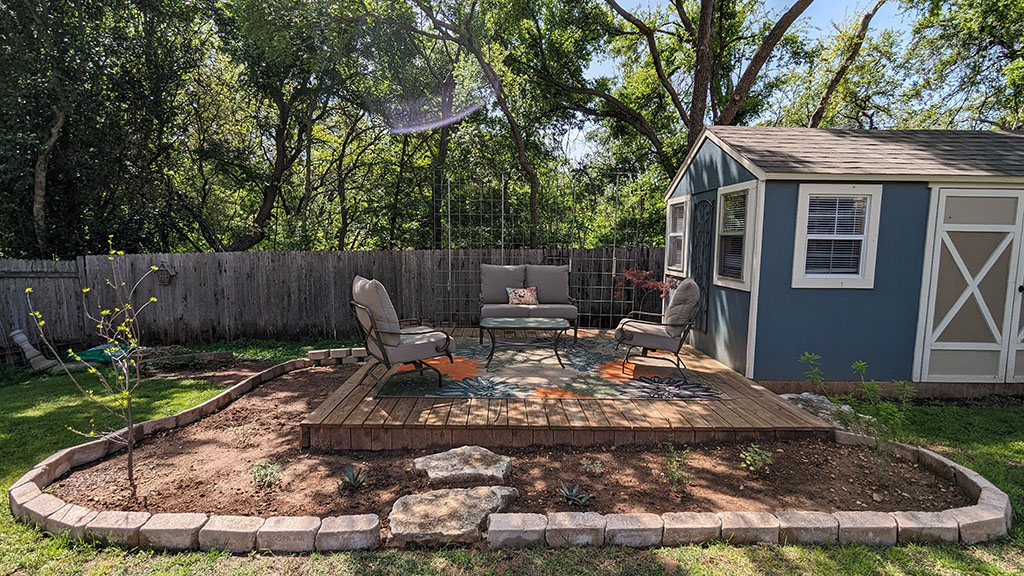
As our Travis County Extension Horticulturist, she’s on the go a LOT helping us all out, so here’s a chance to get her tips on starting from scratch.
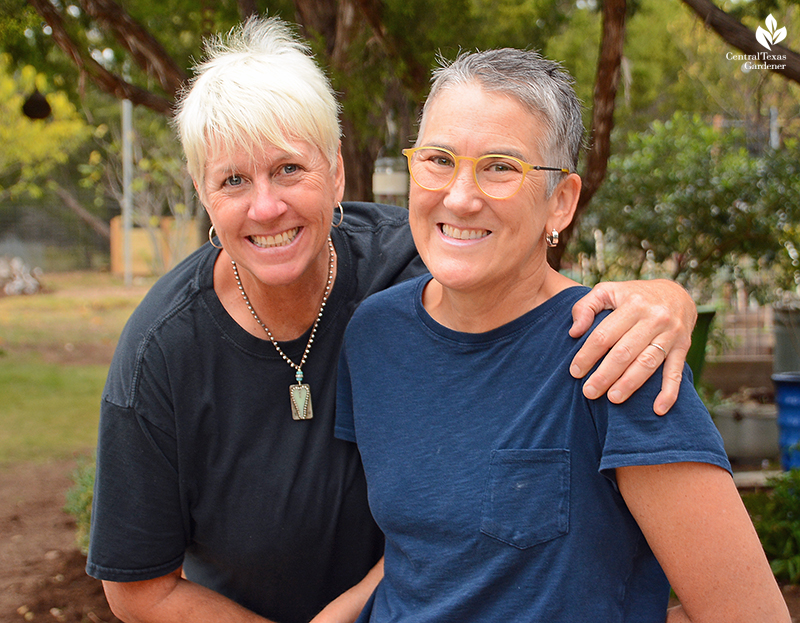
We visited Julie Nelson and Kay Angermann’s garden in 2019 for the 2020 Master Gardener tour. They brought creative collaboration, muscle-wielding grit, and problem solving to rocky, flooding ground to sentimentally-dubbed Katie Bird Farm, named for Kay’s grandmother.
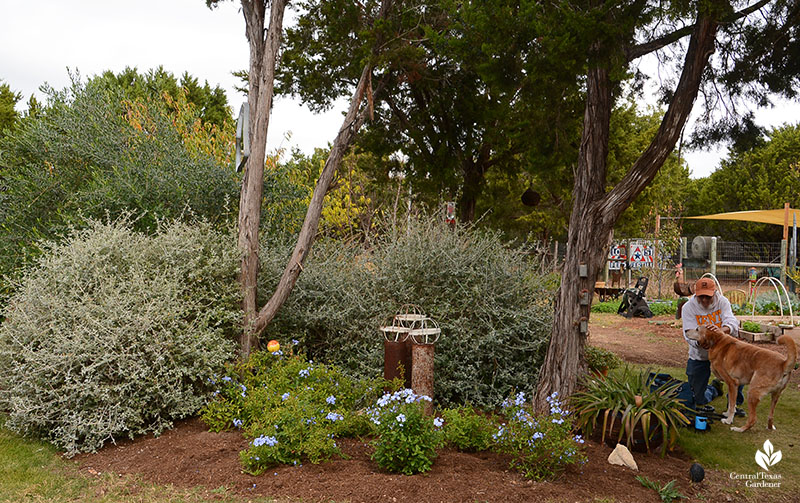
The pandemic pushed that tour back four years, so I know that the dynamic duo at “The Suburban Farm” has more in store for you.
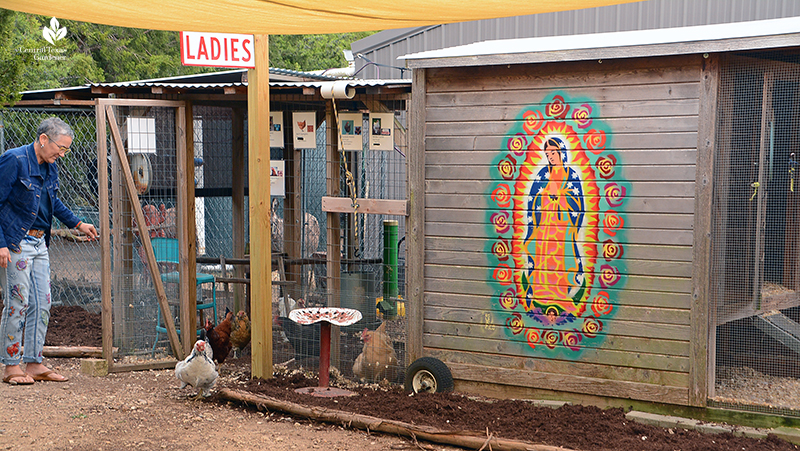
For sure, you’ll wander among clever repurposed finds, flood-control plant design on berms, and delightful conversation nooks to chat with the hens and gregarious donkeys!
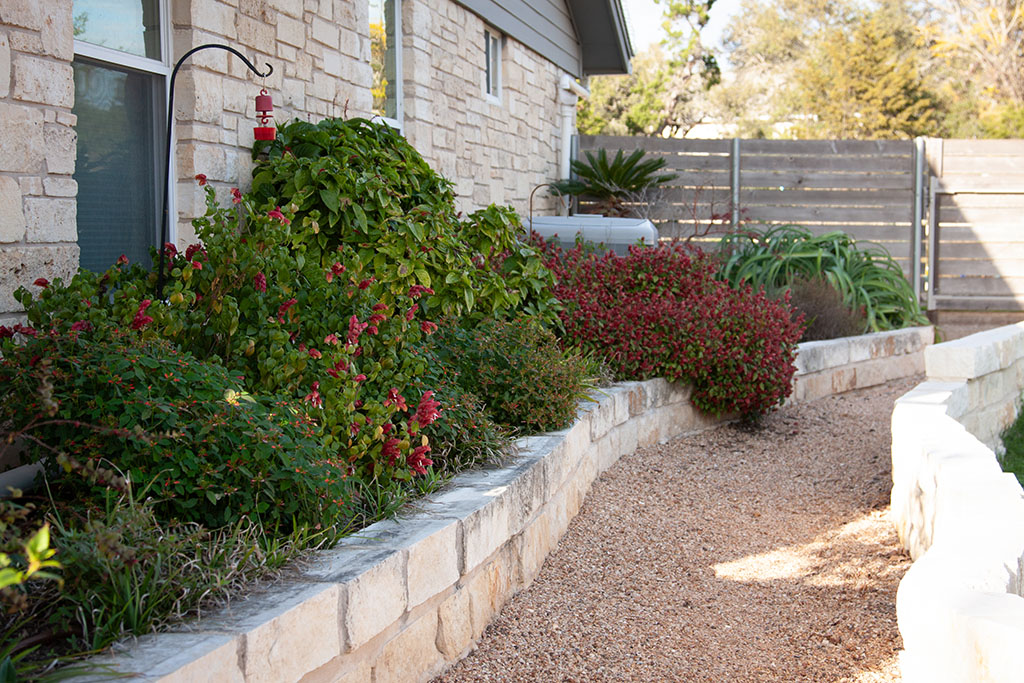
At “The Elevated Garden,” explore designs atop a stone quarry. Master Gardener Theresa Garcia and husband, Donnie can give you lots of rock-solid ideas in their Certified Wildlife Habitat!
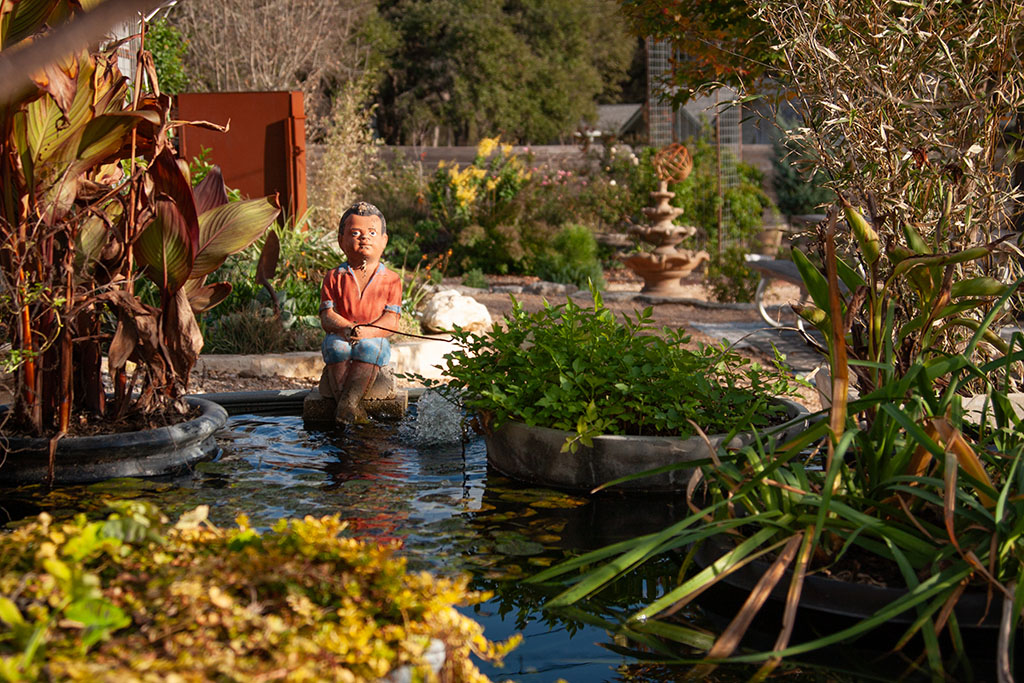
They elevate everything on their one-acre property. Wander through raised vegetable beds and beehives. They keep chickens, too, who will be happy to answer your questions about their care!
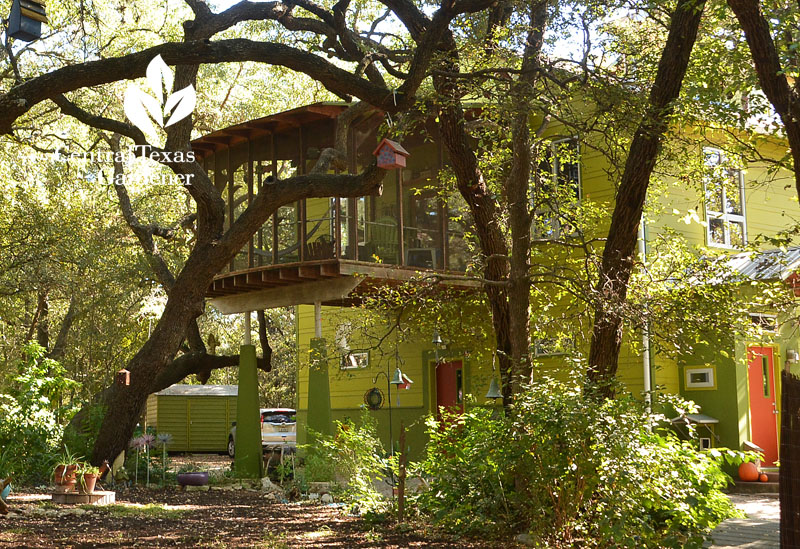
In “The Woodland Escape,” meet habitat gardeners Sandy Stone and Joe Brown who built their home to embrace their bounty of trees and protect the wildlife that live there.
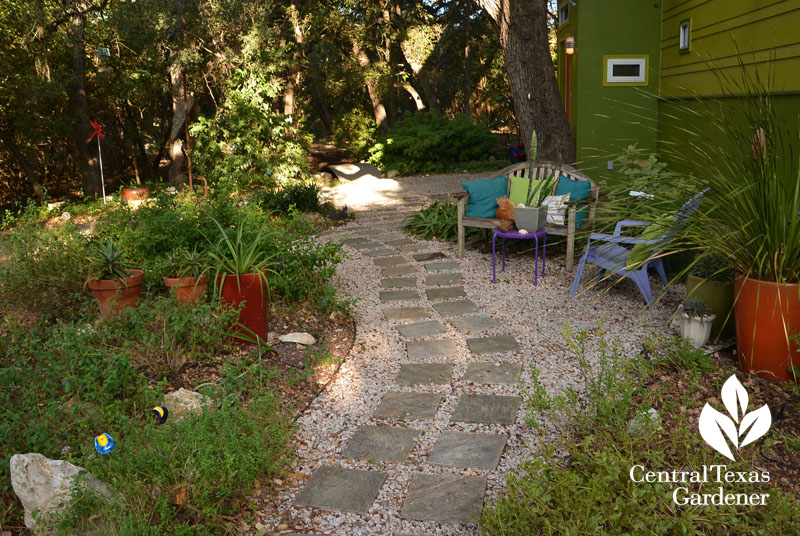
CTG met them in 2017, but I know they’ve made changes since then, too.
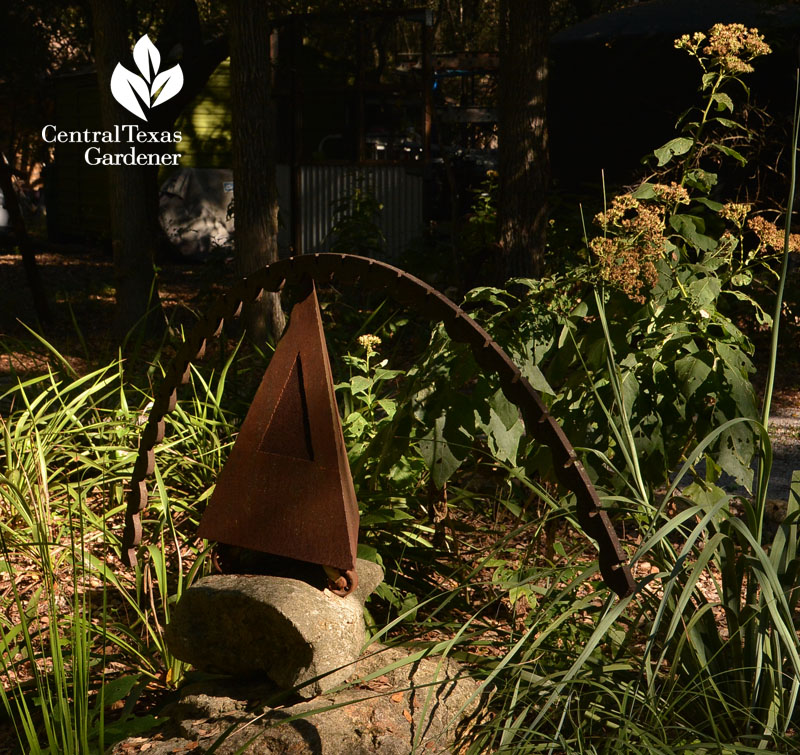
Joe creates sculptures to accent native plants of all kinds.
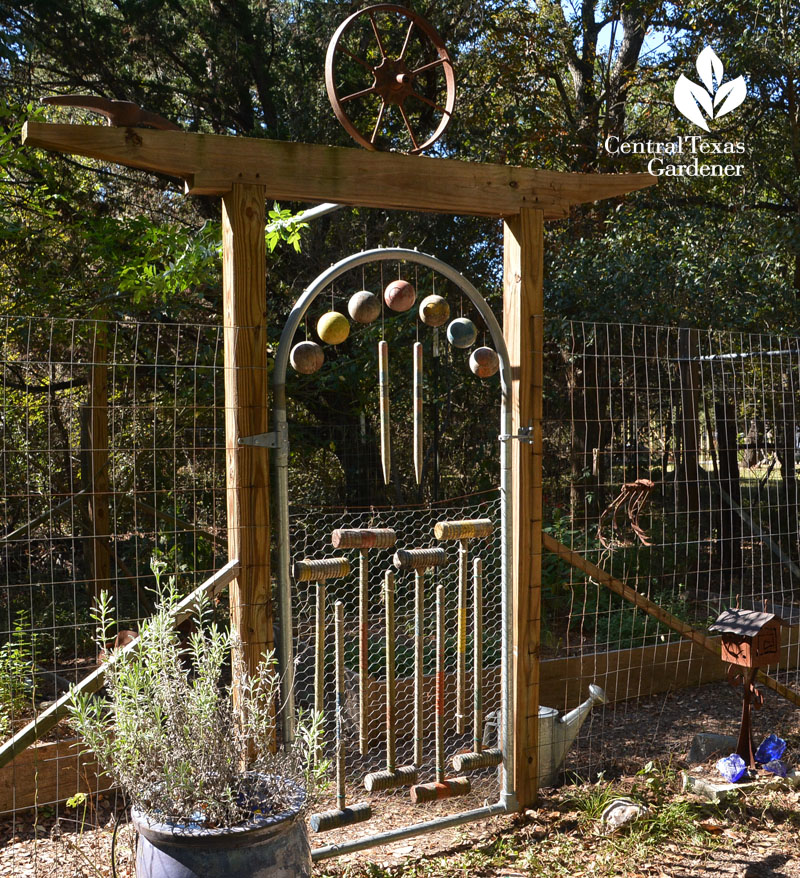
And they bring clever whimsy and sentiment to every nook.
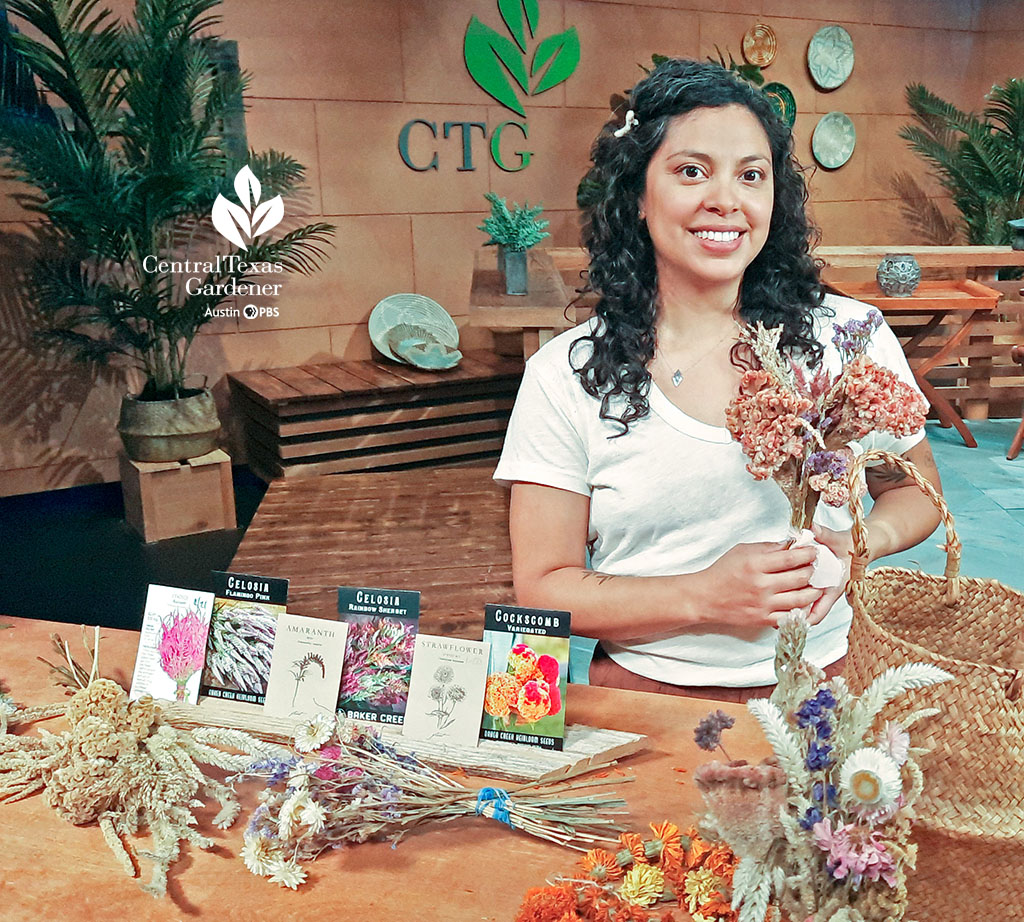
Next, bring spring and summer’s garden beauty inside to enjoy all year! Laura Brennand, cut flower gardener at La Otra Flora, shows how to dry flowers for bouquets, arrangements, and wreaths.
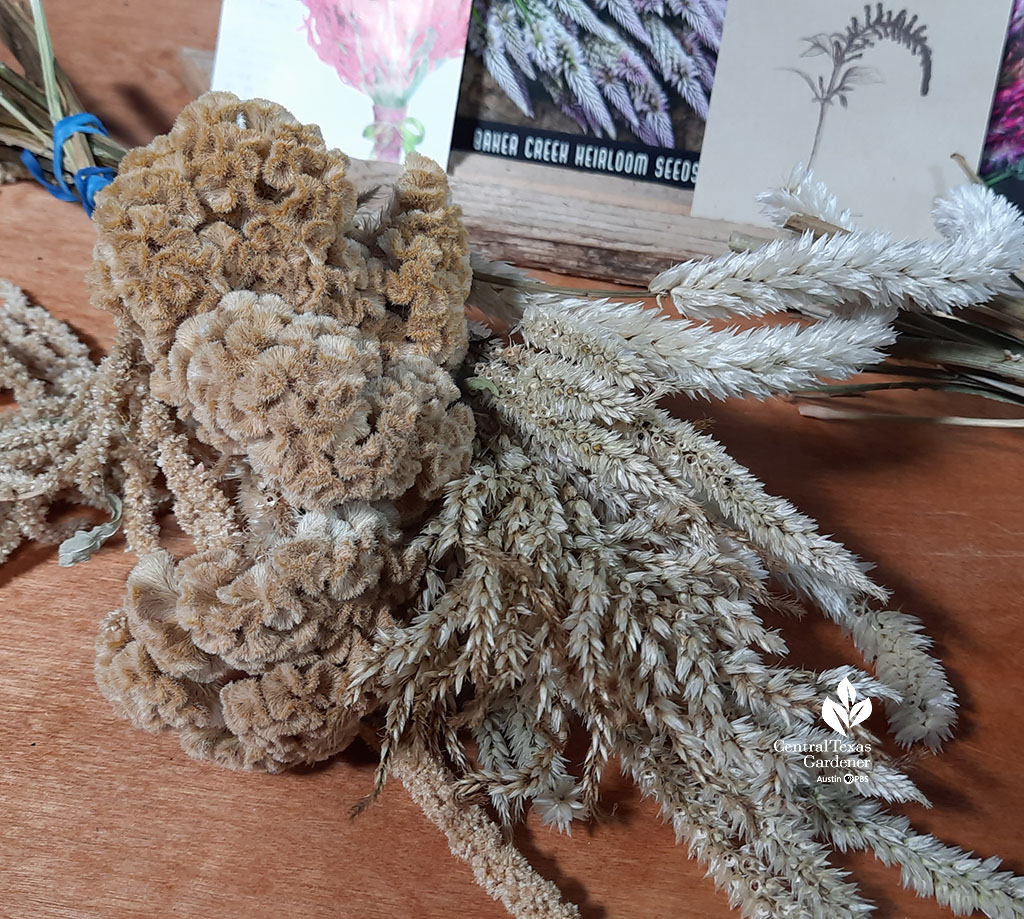
Summertime’s vibrant celosias and amaranth Love-Lies-Bleeding take on new romance as their colors fade.
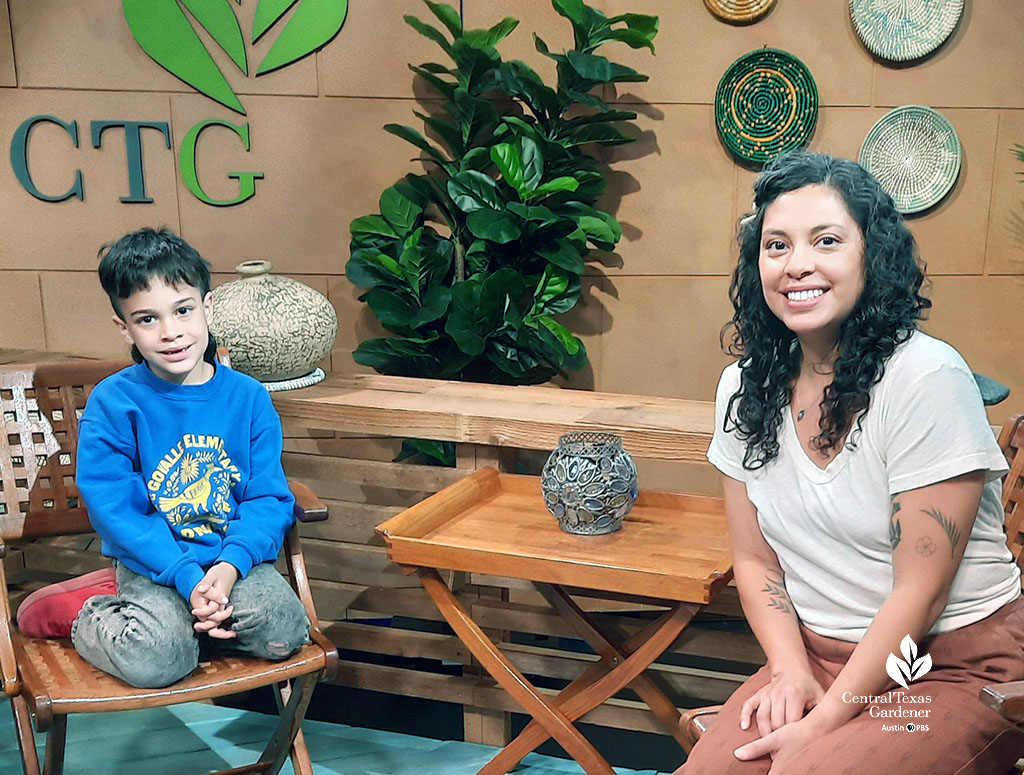
Laura discovered her passion for growing flowers when her adorable son Shea was an infant (now 7!). We fell in love with him when we first met at Laura’s garden and later returned to learn how to plant flower seeds (including persnickety poppies) in fall.
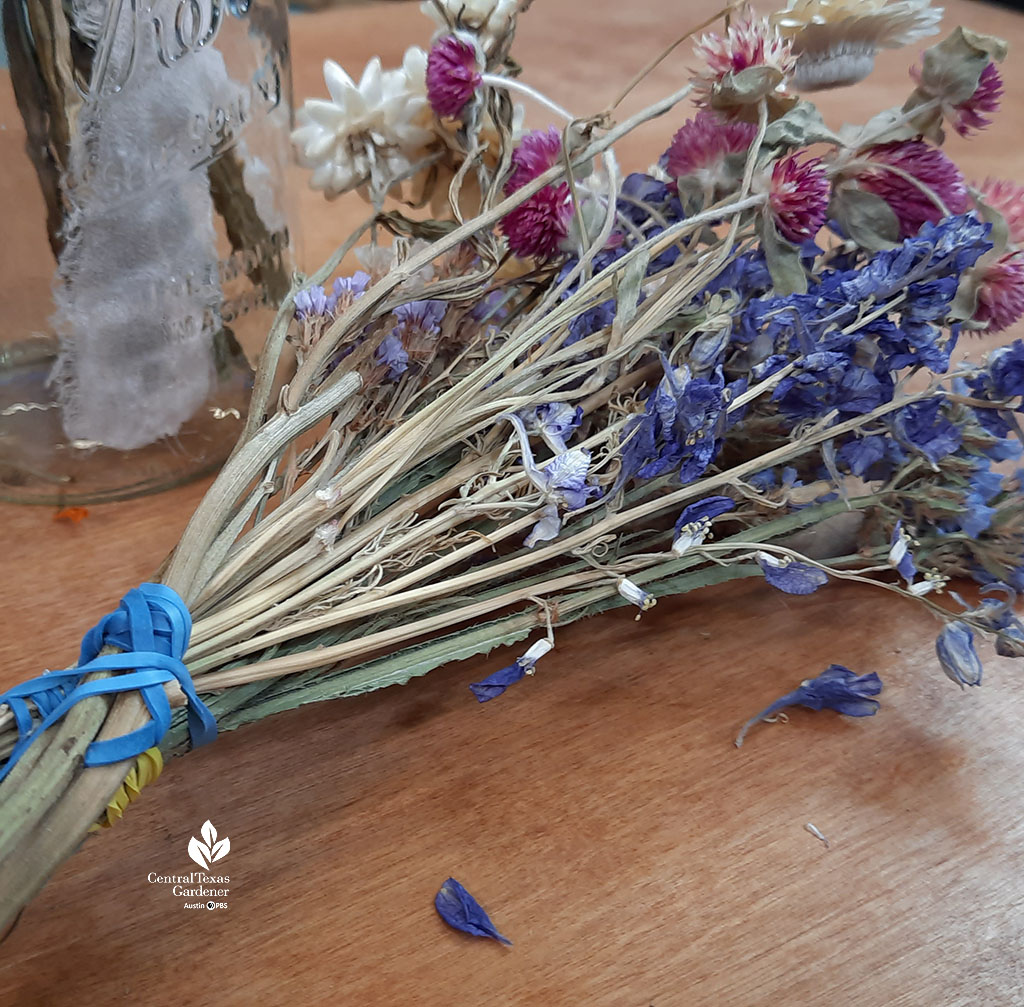
I bet Shea helps her secure the floral bundles with rubber bands to dry in a cool place inside, including Laura’s all-star: strawflower, gomphrena (globe amaranth), larkspur and statice.
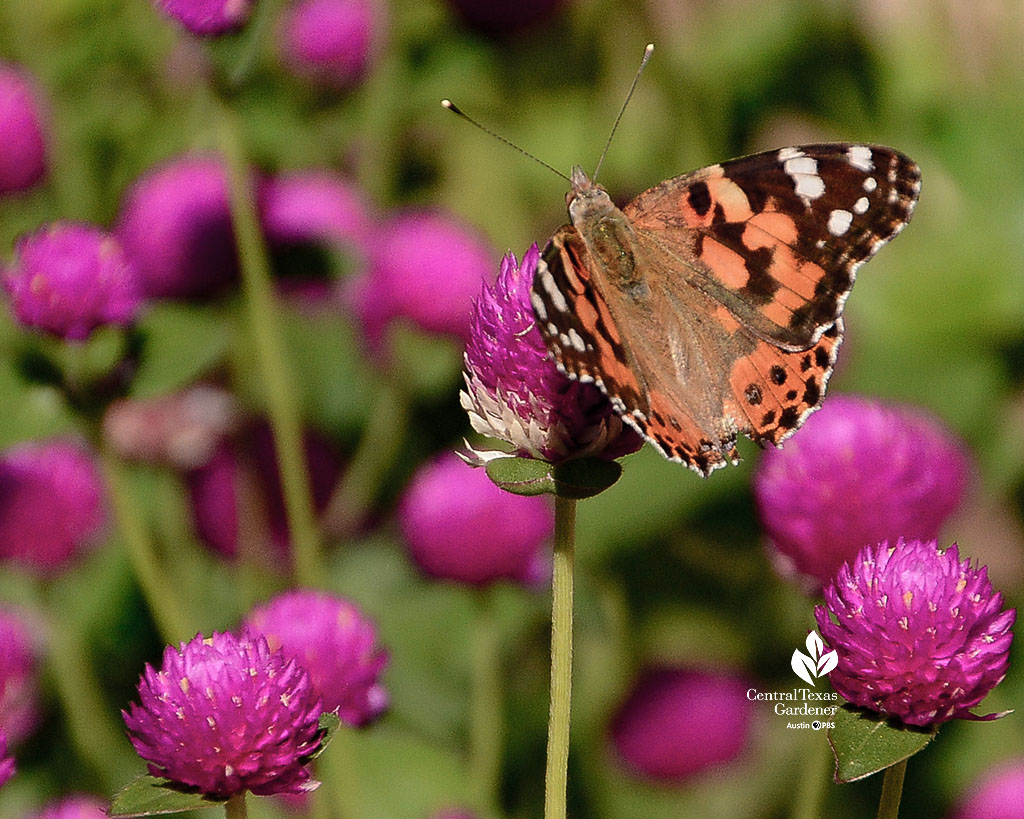
All her plants attract pollinators in spring. Gomphrena loves the heat and butterflies love it. Here’s a bordered patch butterfly dipping into nectar.
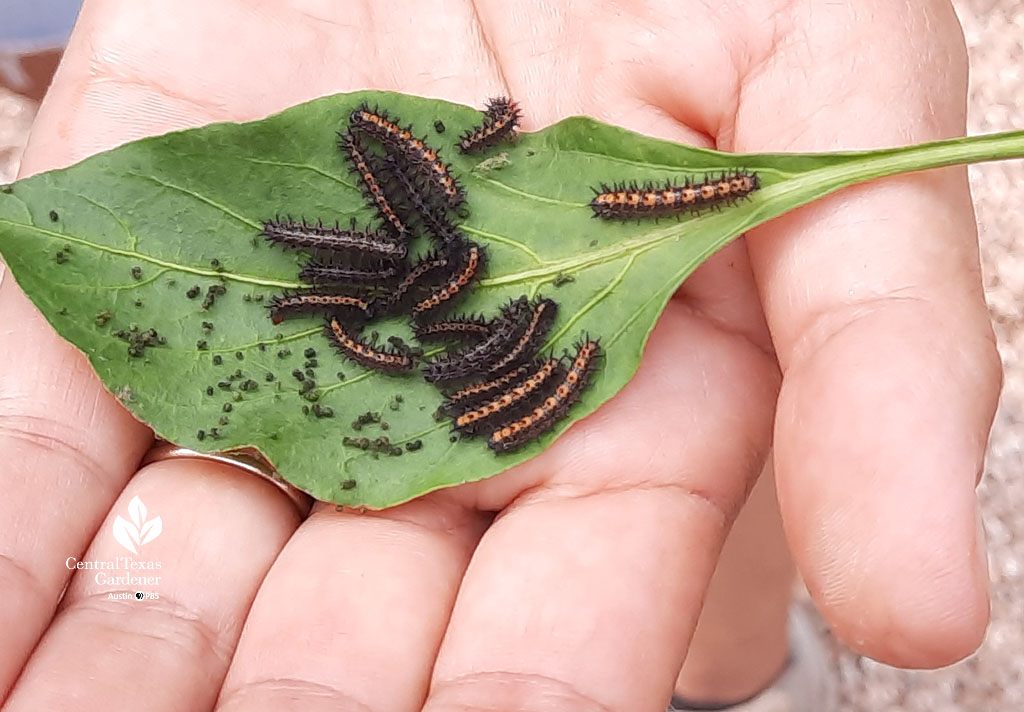
But to get the butterflies, you’ve got to feed their young. Bordered patch butterflies feed on cowpen daisy, sunflowers, verbenas, and zexmenia.

So, Travis County Extension IPM Program Specialist Wizzie Brown reminds us that chewed leaves are part of a healthy balanced garden. With food crops, you may want to use controls like Bt (Bacillus thuringiensis) if squishing doesn’t work for you. Just note that it will harm the caterpillars you want, too. Also, right now, I’ve got wrens nesting in a patio hanging basket, and the parents are hauling lots of wiggly food to the youngsters all day long!
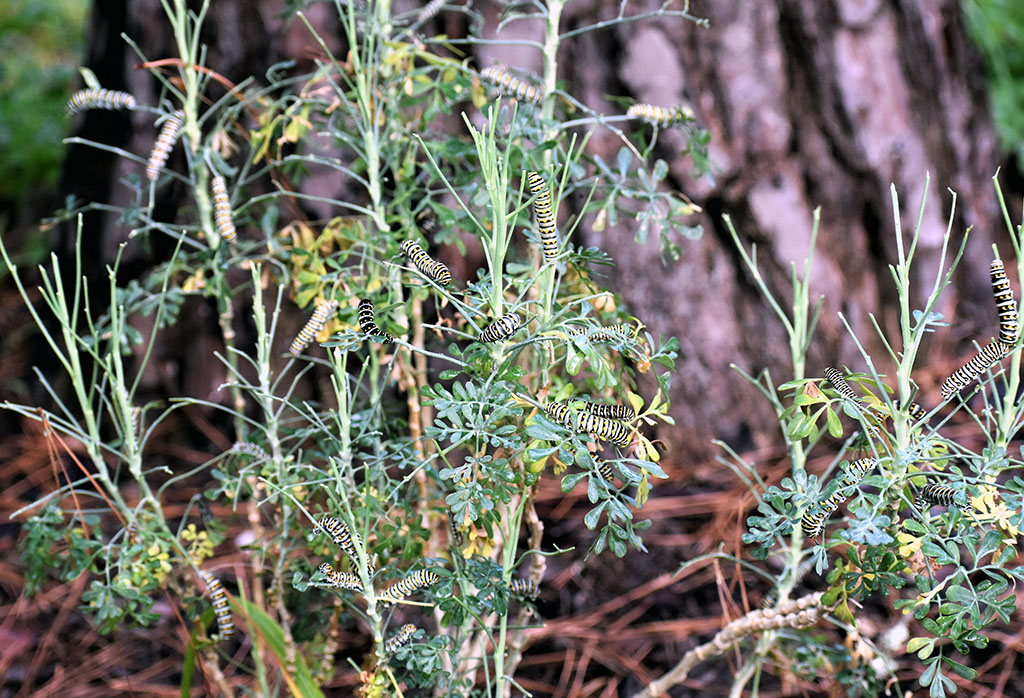
And to that, viewer Patricia Anderson in Bastrop shared a picture of black swallowtail butterfly caterpillars that devoured her rue plant last fall. That was one reason she planted the rue—she wanted the butterflies. So, she covered the plant with shade cloth to save as many as possible, but most were gone the next morning. Most likely birds and lizards still snagged them (that’s happened to me in the same situation).
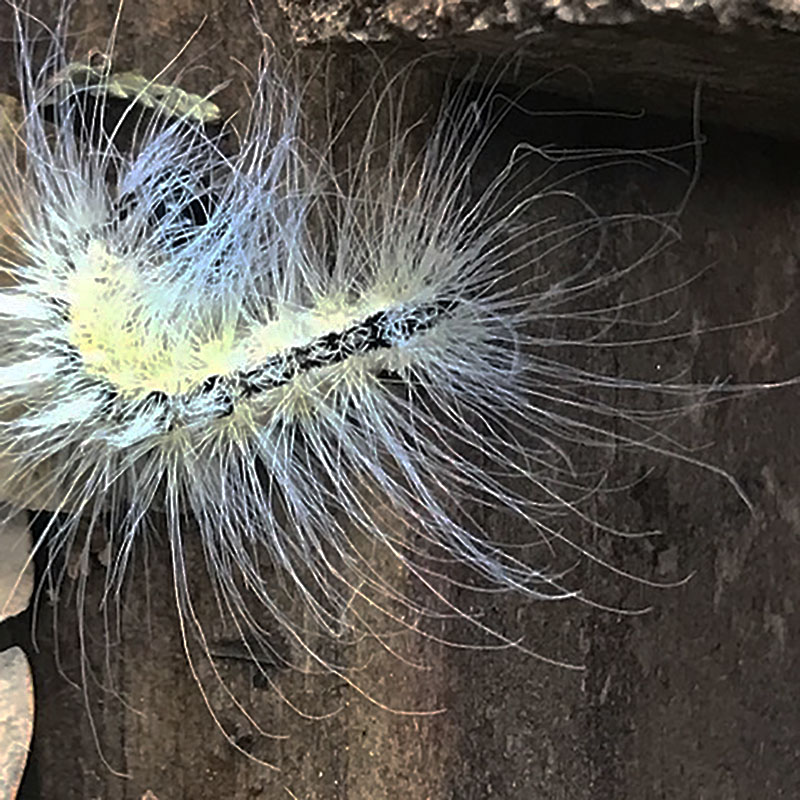
From viewer Marjorie Mautz comes a fall webworm caterpillar. Wizzie notes, “They create unsightly webbing on the tips of tree branches, but rarely cause long term damage to the trees. If you feel the need to manage them, break open the webbing with a stick or jet of water to allow predators inside the webs to feast.”
Wizzie’s Backyard Bug webinars are a great way to learn more about the creatures in your yard! Email her at ebrown@ag.tamu.edu to sign up for notifications. And follow her on instagram for the latest bug adventures!
Watch now for so much more!
Thanks for stopping by! Linda

